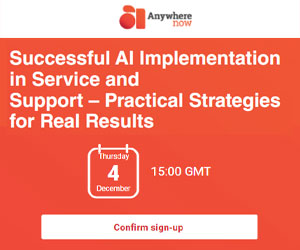Contact centres are diverse and highly complex organizations that are made up of different functions, but generally, they are all united by a similar purpose.
They are part of an organization in which incoming and outgoing communications from both new and existing customers are handled by teams of agents.
A simple way of explaining the make-up of an organization such as a contact centre is the commonly used term “People, Process and Technology”.
People themselves do the work, process helps people do the work better, and technology helps people do faster more innovative work.
People – They do the work, but how they do that work is crucial. There is lots of talk at the moment about how artificial intelligence (AI) will impact the role of humans, but people are, at least for now, still required for governing output.
Process – This helps people do their work better. Processes help define and standardize work, preventing people from having to reinvent the wheel all the time.
Technology – This helps people do faster and more innovative work.
Strategy and the Importance of People, Process and Technology
People utilizing processes allows businesses to scale, and this is where growth is accelerated; one person following a great process can be the same as ten following a poor process.
People interacting with technology allows us to innovate. We start by creating new ways of doing the things we’ve always done, but then we open our minds to new ways of doing things.
Processes that interact with technology allow us to automate. Machines execute things far faster than people can.
When businesses successfully manage all these interactions, they grow and they see success.
“In reality, strategy is actually very straightforward. You pick a general direction and implement like hell.” – Jack Welch, a well-known American business executive.
Defining Your Strategy
What are the questions businesses need to ask themselves?
- Are we fast enough?
- Are we creating value?
- Are we efficient enough?
The answer to these questions allows us to start to understand where change is required. However, one key ingredient is missing: a strategy.
If an organization doesn’t have a strategy, how can it answer these questions?
But just as people, process and technology come in threes, so does strategy:
- Strategy is why we make the decisions we make
- Tactics are what choices we’ll make to achieve those decisions
- Execution is how we’ll implement our choices
Businesses need to be able to answer the question of why in order to answer the subsequent decisions of what and how.
Creating a Strategy for Your Business
Here’s a set of five key considerations to make when putting together a business strategy.
Consideration 1 – One of the first things you must do before creating a strategy is knowing where you are right now and knowing where you are heading. You should review past performance and the current situation to determine what works well and what doesn’t.
Consideration 2 – Having a mission statement in place defines the organization’s purpose and outlines its objectives. For example, where do we want to be in five years? What do we do? How do we do it? This is what leads to identifying strategic objectives.
Consideration 3 – You will need to highlight the main objectives in all areas of your business to ensure you can deliver the company’s vision. This will help by looking over a SWOT (strengths, weaknesses, opportunities and threats) analysis so you can incorporate the main strengths and weaknesses, as talked about in step one.
Consideration 4 – Now you have your objectives, it’s time to create a short-term plan. Creating short-term plans will enable your business to see how well it’s performing for departments and functions in your organization. This leads on to the final step, performance management.
Consideration 5 – As a business, you must be continually managing and monitoring objectives to make sure you are on track to achieving your targets.
Author: Robyn Coppell
Published On: 26th Feb 2020 - Last modified: 3rd Mar 2020
Read more about - Guest Blogs




































